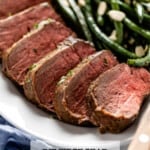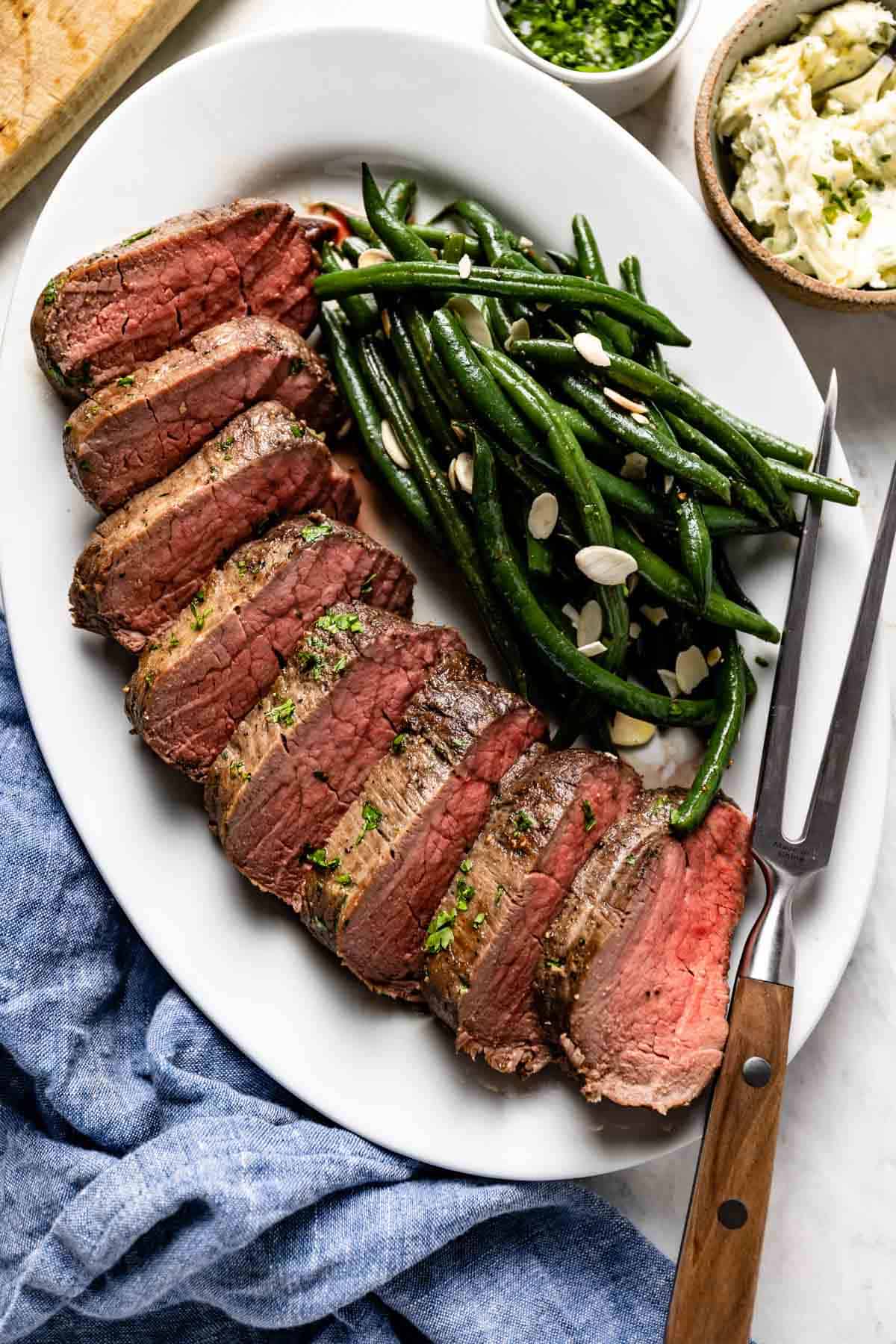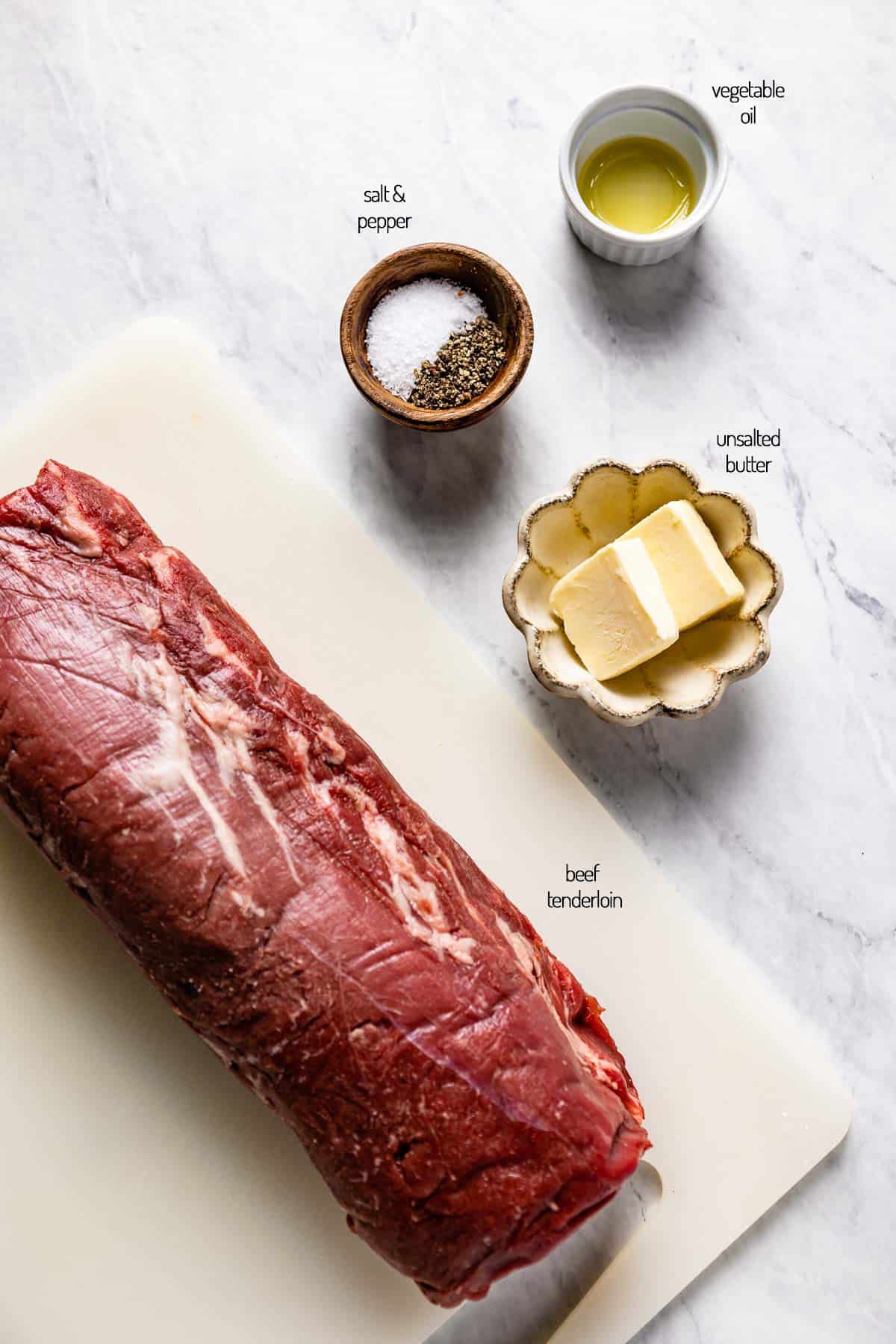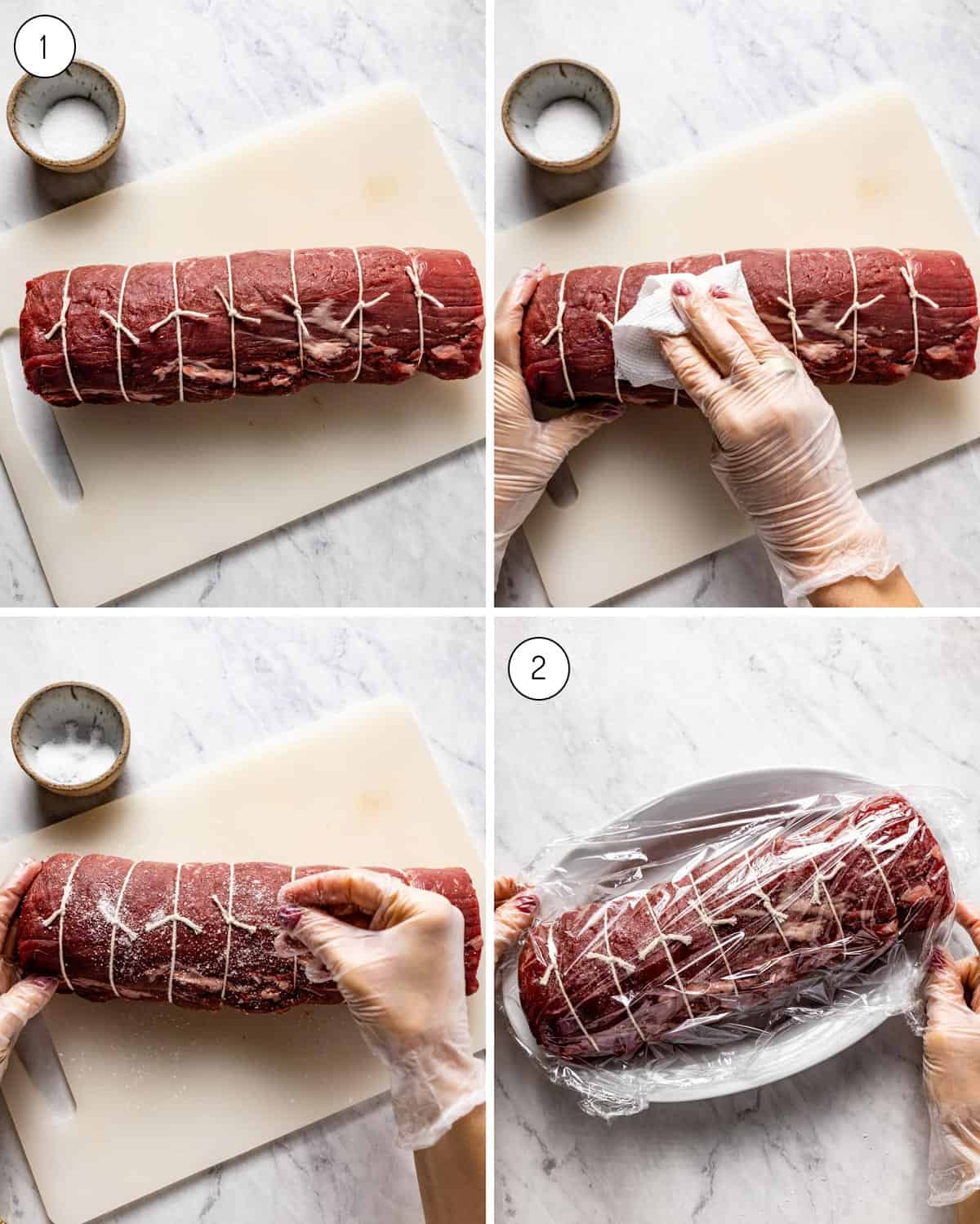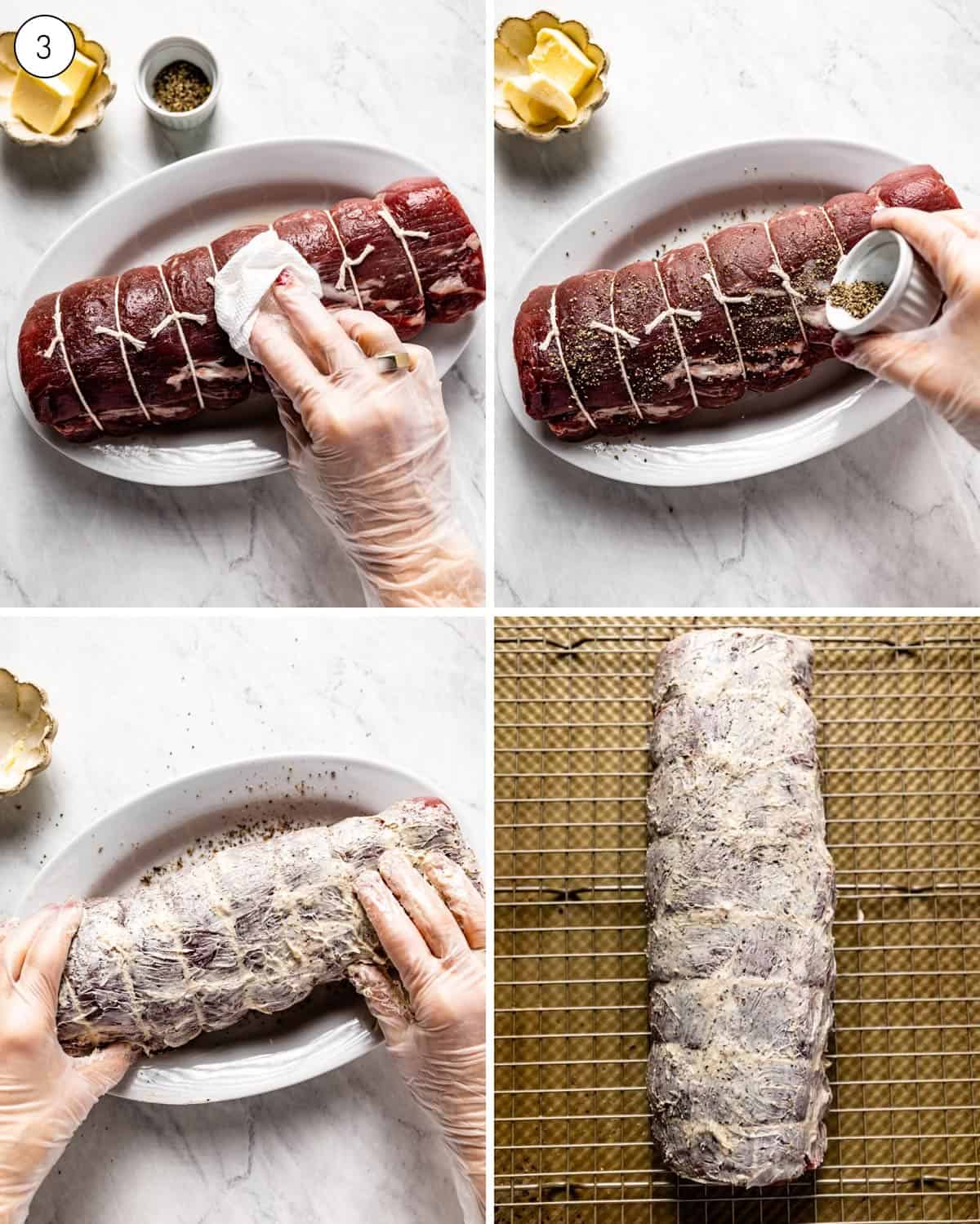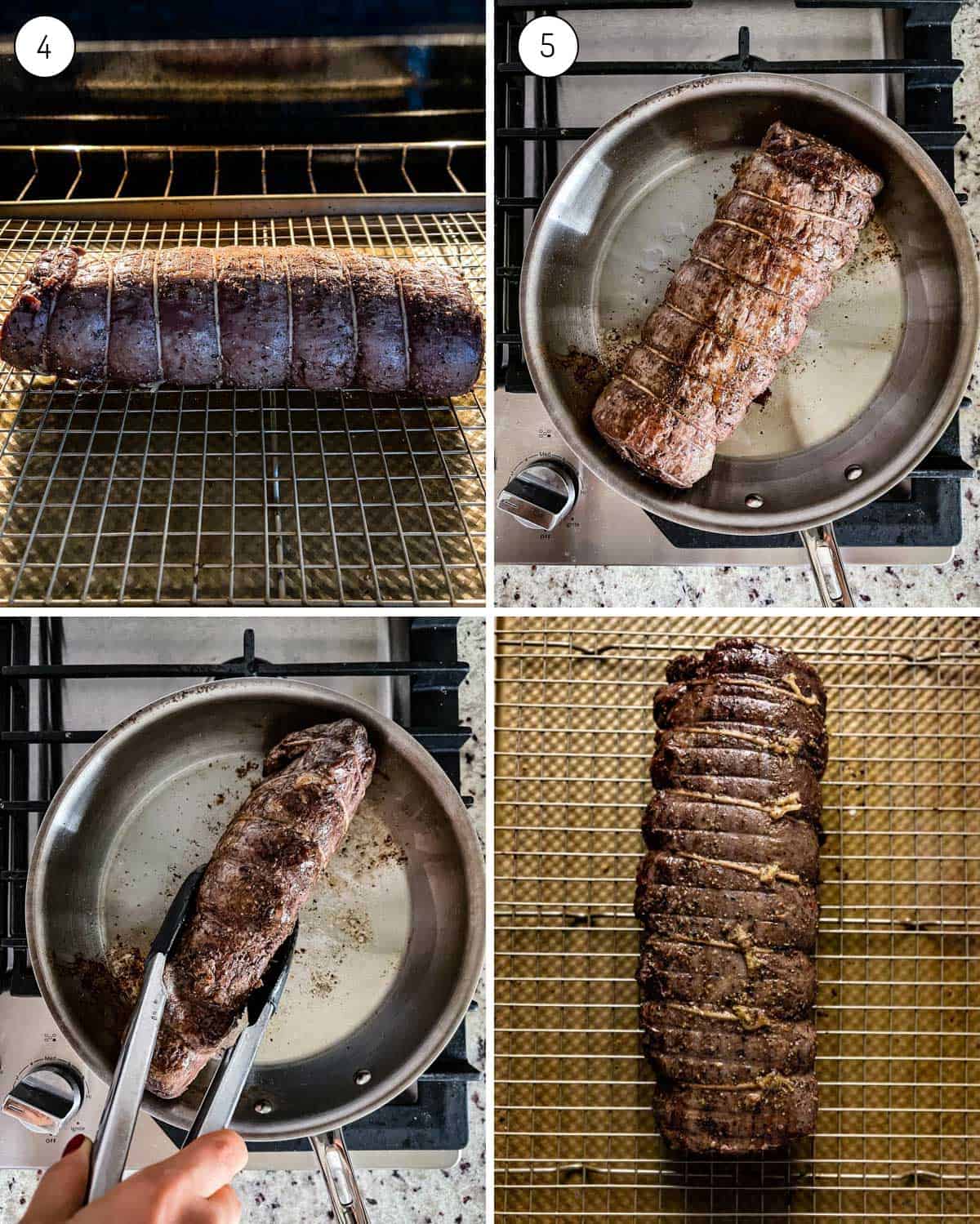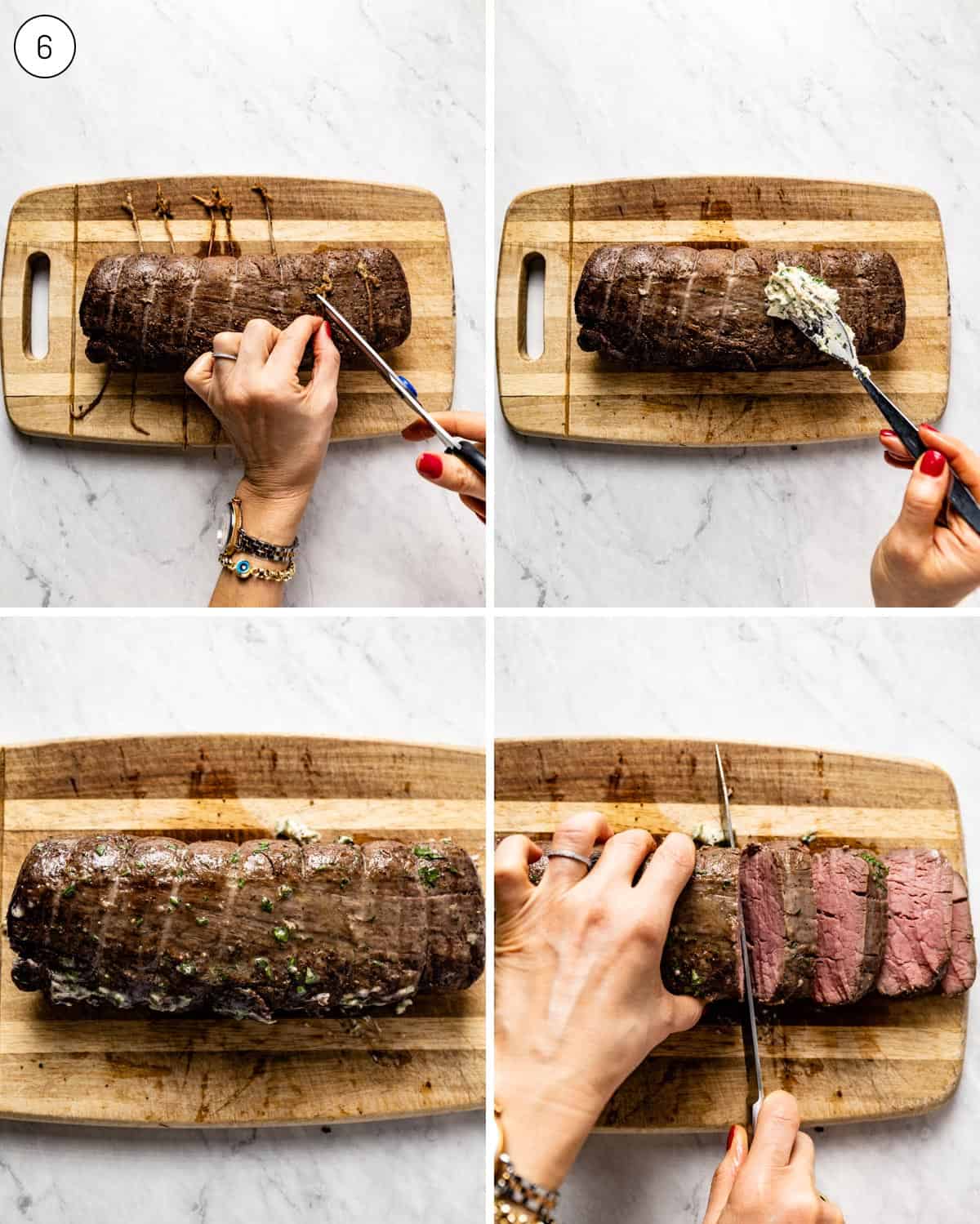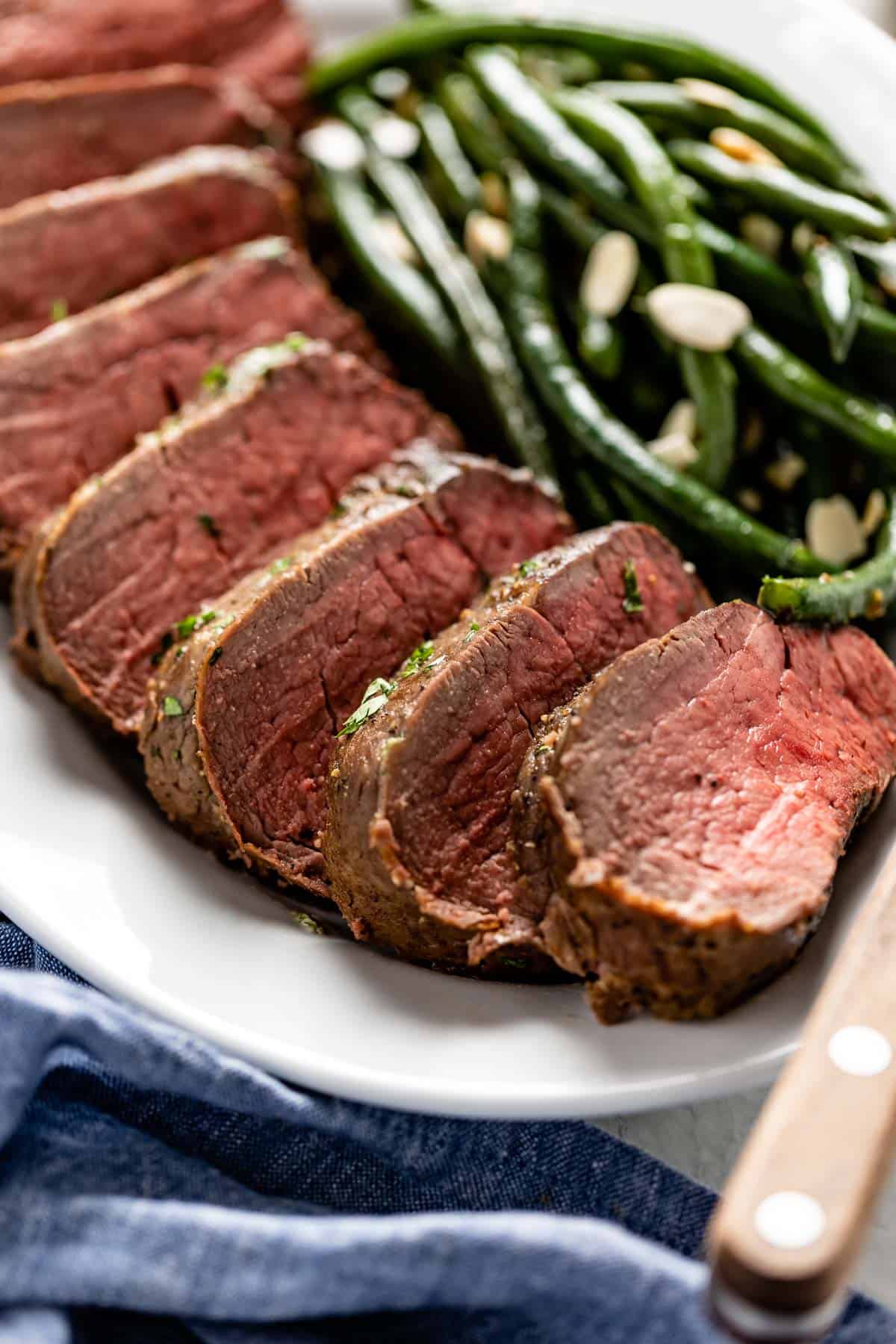All you need is the right technique, some planning, and just a few basic seasonings – salt and pepper! – to treat your family and friends to chateaubriand’s full-bodied flavor. Whether you serve this beef tenderloin for Christmas dinner, Easter dinner, or just because, this roast tenderloin recipe will be your go-to whenever you want to impress. The uncut beef loin is usually uneven, with a thick middle section that tapers off to thinner ends. However, butchers often cut off the ends to yield an even, center cut of beef, referred to as the chateaubriand. Filet mignon steaks, then, are just chateaubriand cut into smaller pieces. In this reverse sear whole beef tenderloin recipe, we begin by roasting the meat in the oven at a low temperature for nearly an hour, giving the heart a pink, tender center. Then, we sear the beef on the stovetop at high heat for a short time (only two minutes on each side) to give it a crisp exterior texture. This recipe uses Diamond Kosher Salt (affiliate link.) If you are using table salt or sea salt, please use half the amount of salt that is listed in the recipe card below.
Optional Seasoning Suggestions
Fresh herbs: Give your beef tenderloin seasoning a garden-fresh taste by adding a layer of fresh herbs. Fresh rosemary and thyme are two of my favorite herbs to use in this dish. Creamy horseradish sauce with garlic: If you’d rather omit the garlic butter in this beef recipe, storebought or homemade creamy horseradish sauce makes an excellent substitute.
How Long Does it Take to Cook a Beef Tenderloin?
Oven Temperature
The ideal oven temperature for roasting a 2 lb. center-cut beef tenderloin using this reverse sear method is 300 degrees. In other words, since we are also searing the whole beef loin on the stovetop as a second step, low and slow cooking is the way to go.
Cook Time
Your cooking time for beef tenderloin will vary depending on your preference for how you like your meat. I recommend following the cook times below for specific preparations:
Rare: 45-55 minutes Medium: 55-65 minutes Medium-well to well done: 75-80 minutes
After you cook the beef tenderloin in the oven, sear the meat in a high-temperature skillet for two minutes on each side (8 minutes in total). This searing process will give your beef loin a crisp and flavorful exterior.
Store: Bring the sliced baked beef tenderloin to room temperature. Then, place it in the fridge in an airtight container for up to four days. To reheat: When it comes to reheating, the goal is not to overcook it and, ideally, to maintain the crusty exterior and soft pink interior. So, to reheat: Remove the sliced chateaubriand from the fridge and let it reach room temperature (10-15 minutes). Meanwhile, preheat the oven to 275 degrees F. While the oven heats, place the tenderloin steaks on a sheet of aluminum foil and drizzle them with a few tablespoons of cooking juices or beef stock. Wrap the beef loosely, fully covering each slice. Roast the wrapped tenderloin in the preheated oven for 10-15 minutes or until the meat’s internal temperature registers 135 degrees F. with a meat thermometer. Let it rest for 5 minutes, unwrap, and serve.
Pro tip: If you don’t like cooking with aluminum foil, wrap your beef with parchment paper before adding a layer of foil.
Chestnut Soup: When the beef tenderloin is cooking in the oven, make this velvety chestnut soup. Ready in 30 minutes, this easy soup recipe is the perfect starter for such an impressive main dish. Warm Goat Cheese Salad: These herb-crusted goat cheese balls bring every bite of reverse sear chateaubriand to life. Served atop a bed of leafy greens, shallots, and Dijon mustard vinaigrette, this tasty side is just what your hearty protein needs. Mashed Potatoes with Rosemary: Nothing pairs better with slow-roasted beef tenderloin than this creamy classic. Buttery, rich, and whipped to perfection, these mashed potatoes are a go-to dish for a crowd. Roasted Asparagus: With only five ingredients, you can have this fiber-packed vegetable side ready to serve in fifteen minutes. This beginner-level recipe ensures that your expertly seasoned asparagus is tender and flavorful every time.
Trim the whole beef tenderloin: When picking up your meat, I highly recommend asking your butcher to trim the beef tenderloin for you. However, if you purchase untrimmed beef loin, you must trim its fat, connective tissue, and silver skin. Skipping this step may result in unevenly cooked meat. Make-ahead: To make your meal prep more manageable, pat dry, salt, and tie your beef whole tenderloin one day in advance. Wrap the prepared meat with plastic and keep it in the fridge overnight. Just be sure to let it rest at room temperature for one hour before putting it in the oven to ensure proper cooking. Don’t skip tying the tenderloin: Tying tenderloin with butcher’s twine is essential to getting evenly cooked meat. Meat often expands while cooking, so trussing keeps the tenderloin from losing its shape, spreading out, or becoming misshapen. Also, because tenderloin beef usually has a thicker middle (unless it is the center cut) and thinner ends, tying it gives the loin a more even shape, ensuring even cooking. Bring the meat to room temperature: Before cooking a whole tenderloin, it’s essential first to bring it to room temperature so the meat may cook properly. Therefore, after you dry and season your beef loin, let it rest for a full hour at room temperature before putting it in the oven. Larger pieces: If your beef tenderloin is larger than 2 lbs., I recommend cutting it into 2 lb. pieces and roasting them side-by-side on a wire rack. Any loin 4 lbs. or greater won’t sear properly, so this slicing step will help your meat cook on the stovetop. Do not skip searing: It is important to take the time to sear the roasted tenderloin. The recipe suggests that it is best to sear for 1-2 minutes on each side. I recommend using a pair of tongs to hold it so that even the sides get properly seared. Don’t cover the tenderloin beef with tin foil while resting: Once you remove the roast tenderloin from the stovetop, there’s no need to cover it with aluminum foil. Covering the meat will trap its heat, increase the temperature of the beef tenderloin, and potentially overcook its pink center. Use a digital thermometer: The best way to tell whether your whole beef loin is ready is to test its temperature with an instant-read thermometer (affiliate link). I recommend inserting the thermometer into the thickest part of the beef at its top center to ensure it thoroughly cooks.
Pressure Cooker Roast Braised Short Ribs in Beer Marinated Cornish Hens Roasted Turkey Tenderloin Instant Pot Lamb Shanks
If you try this Reverse Sear Roast Beef Tenderloin recipe or any other recipe on Foolproof Living, please take a minute to rate the recipe and leave a comment below. It helps others who are thinking of making the recipe. And if you took some pictures, be sure to share them on Instagram using #foolproofeats so I can share them on my stories. This recipe has been adapted from America’s Test Kitchen’s Classic Beef Tenderloin recipe with minor changes to the originally published recipe.
